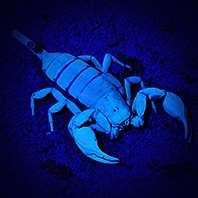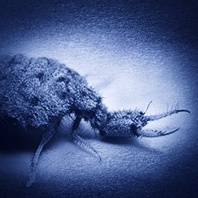Tag:
Animals
Scorpions have the quality that they are fluorescent and glow when in contact with UV radiation. This becomes clearly visible, when they are directly exposed to UV light. However, the UV components, which are contained in the sunlight and the moonlight, are hardly sufficient to produce this glow to an extent that it is visible to humans. Still, scorpions appear to detect the UV components and hence react to moonlight.
Read more
The film is based on the book of the same title by Cressida Cowell (2003), was released in 2010 in movie theaters and became one of the most successful animations and earned nearly $500 million. Next to its impressive technical quality of the animation, it is most of all about the story of Hickup, a son of a Viking, who flies directly into the hearts of the audience, with his ability to tame dragons, which was a hostile skill to have up until then.
Read more
The antlion is the larva of the myrmeleon, which belongs to the net-winged insects. This insect grows to be 0.6 inches and predominantly stands out because of its large jaw pincers, which let you anticipate its predatory disposition. The antlion is famous for its sophisticated method catching prey. It digs funnels in the sand that function like a trap for other insects (i.e., ants or spiders). When prey steps on the edge of the funnel, the antlion begins to throw sand on the animal from the bottom of the funnel. The thereby created movements, activate the slipping of the funnel walls and transport the prey directly into the fangs of the antlion, who then kills them with its poison.
Read more
Jellyfish are fascinating beings and although, nobody would actually like to come into contact with them, we are mesmerized by them and admire their shapes, colors and almost etheric bodies, which are floating through the water – like entities from another world. And lo behold, there is also one kind that the Moon lent his name to: the »moon jellyfish« (lat. aurelia aurita).
Also in various other languages, you can find the word »moon« in the name these jellyfish:
Read more
Lions mostly hunt in the dark, as predators have more of an advantage if it is as dark as possible. Hence, the moonlight is a disturbing factor, because it makes the predators easily detectable by their prey. And when the full moon is actually in the sky, it then so happens, that the lions occasionally come away empty-handed. Thus commences a time at full moon (and shortly before), where the lions begin to starve and hence their urge to hunt increases.
Read more
»Moon blindness« (lat. morbus lunaticus) has nothing to do with the moonlight and luckily does not afflict humans. It is a disease of the eyes of horses, which recurs periodically. Due to an inflammation of the iris, which is caused by bacteria from food that has been contaminated by mice and rats, the cornea of the eye can cloud over. This leaves a bluish color, which gave the illness its name (even though the moonlight is not blue). If this inflammation continues to happen in an interval of months, it is possible that over the years it can lead to complete blindness of the animal. There is the option of an eye operation in the early stage of the illness, however, this is not straightforward.
Read more
The »sunfish« is called »moonfish« in many languages. It is the biggest and heaviest bony fish in the world, weighing up to 2,500 kg and showing off up to 3 m length and 4 m height! It can grow over 100 years old. Its Latin name »mola mola« derives from its shape, which reminds of a »millstone«, but apparently, also the Moon was the force behind the naming:
Read more
Although, one could assume that the following concerns vampires or werewolves, we occupy ourselves with another kind of bite, namely the bite of animals to humans. There is a study of the E.R. department of the Bradford Royal Infirmatory in Bradford, England from 1997–1999. Here, the question, whether animals bite more often at the full moon, has been investigated. 1,621 patients were looked at, who had been treated for animal bites. The majority of affected patients had been bitten by dogs (95.1 %), others by cats (3.4 %), horses (0.8%) and rats (0.7 %). The surprising aspect of this study is, that indeed a significant connections could be detected between the full moon happenings and the animal bites. Hence, this should be the first study, known to us, which provides such a result!
Read more
Although, one could easily presume that full moon influences the reproduction of many creatures, this has really only been proven for some species. One assumes this is the case with wolves, specific insects or crabs and also many humans vow not being able to do anything other than to look for the closeness of the other (or the same) sex at full moon. But absolutely certain are scientist only about one animal species that may not even be considered an animal by many: the corals. Here it has been established that reproduction is dependent on water temperature and moon light.
Read more









